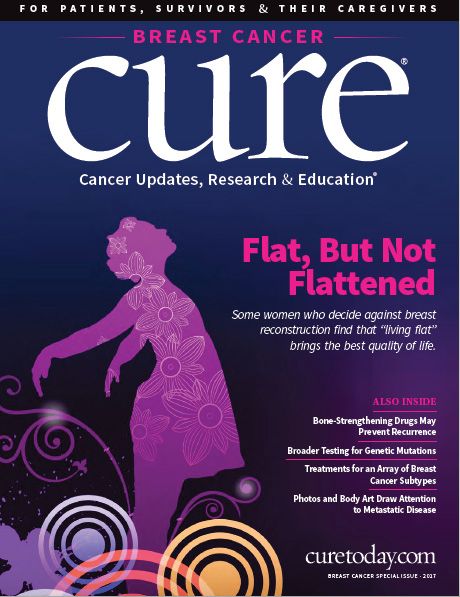Publication
Article
CURE
A Delicate Balance: Treating Cancer in the Midst of the Opioid Epidemic
Author(s):
An ongoing opioid epidemic is making it more challenging to treat cancer pain.
EXTRA VIGILANCE, CAREFUL MANAGEMENT and emphasizing empathy can make treatment for cancer pain more effective during an opioid addiction epidemic, said Judith A. Paice, Ph.D., RN, during a presentation at the 19th Annual Lynn Sage Breast Cancer Symposium, in September.
Although it’s understandable in the current climate that both patients and physicians might approach opioid use with extra caution, this may be excessive in some cases, said Paice, director of the Cancer Pain Program and a research professor of medicine at Northwestern University’s Feinberg School of Medicine, and past president of the American Pain Society. More patients than ever are living with pain. As of 2012, there were 32.6 million people worldwide living with cancer, and that number is expected to jump to 52.2 million by 2030, according to the International Agency for Research on Cancer.
Improvements in cancer treatment have led to millions of patients surviving for a decade or more, with a corresponding increase in the number who live with pain. Paice cited a review published in Pain, estimating that 40 percent of cancer survivors live with some degree of pain and that 5 to 10 percent have severe chronic pain that limits their ability to function. One in five childhood cancer survivors reports pain.
Amid the discussion about opioid overuse, Paice is concerned that some patients remain undertreated due to addiction fears that do not match the evidence. “After (the singer) Prince died, people asked me to take them off their fentanyl patches, and I had to reassure them that Prince hadn’t died from a fentanyl patch,” she said. Although long-term opioid addiction often begins with the use of prescription painkillers like oxycodone, Paice cited research showing that three of four such addicts acquired those pills illicitly rather than through a legitimate prescription.
The Centers for Disease Control issued guidelines for opioid treatment last year, and Paice said that both primary care physicians and insurance companies sometimes treat them as a mandate, even though they may be too conservative to be applied to cancer-related pain. “Many of us protested the recommendation that patients be given no more than 50 mg of morphine and only a three-day supply at discharge,” she said. “Imagine that 80-year-old woman who lives far from the hospital, relies on family members, is discharged on a Thursday, and now on a Saturday or Sunday has to get a new prescription.”
Paice also cited statistics showing that, while there is a rough correlation between sales of prescription opioids and deaths from opioid overdose, the number of deaths from prescription opioids has plateaued (although deaths from illicit opioids are still climbing). Nonetheless, the addiction danger is real, and there are possible long-term health complications from sustained opioid use even when the patient is not an addict, Paice said. “We didn’t see these effects when I was starting out in practice,” she said, “because we only prescribed opioids at the end of life.”
These side effects include constipation, mental clouding, upper gastrointestinal symptoms, hormonal problems, sleep apnea and a poorly understood risk of opioid-induced hyperalgesia, a condition that stimulates additional feelings of pain.
There is even some evidence suggesting that prolonged opioid use hinders healing and may increase risk of cancer recurrence.
Paice recommended that health care practitioners who want to give patients the full benefit of opioid pain relief follow some steps to minimize risks. Under her plan, a doctor or nurse would put patients through a screening process before prescribing them an opioid.
To assess your potential for addiction, members of your care team might ask if you or any of your biologically close relatives smoke, drink, use other drugs or gamble, or have done so in the past. They may also ask whether you’ve been sexually abused (a strong risk factor for addiction), or if you worry about becoming addicted.
Once you’ve been prescribed an opioid, Paice suggests that your doctor monitor your use of the drug with a toxicity screening test at once a year to assess whether you are overusing the medication or abusing other substances. Your care team also may check that you’re using your opioids for pain, and not to relieve anxiety or help you sleep.
“It’s acceptable to take your medication before bed if you have vertebral fractures” and know that you’ll have pain when you lie down,” Paice said, “but if you’re taking it every night at 9 p.m.to make you sleepy, we have a problem.”
Illicit users of prescription opioids may try to get their drugs from legitimate users, so patients need to be on guard. If you come up short on your pills, you may be taking too many — or maybe someone is stealing them from you, Paice said. “I tell patients, ‘Maybe it’s not your grandkids, but it’s their friends.’”
Patients who have pills they no longer need should dispose of them through a formal drug take-back program.





